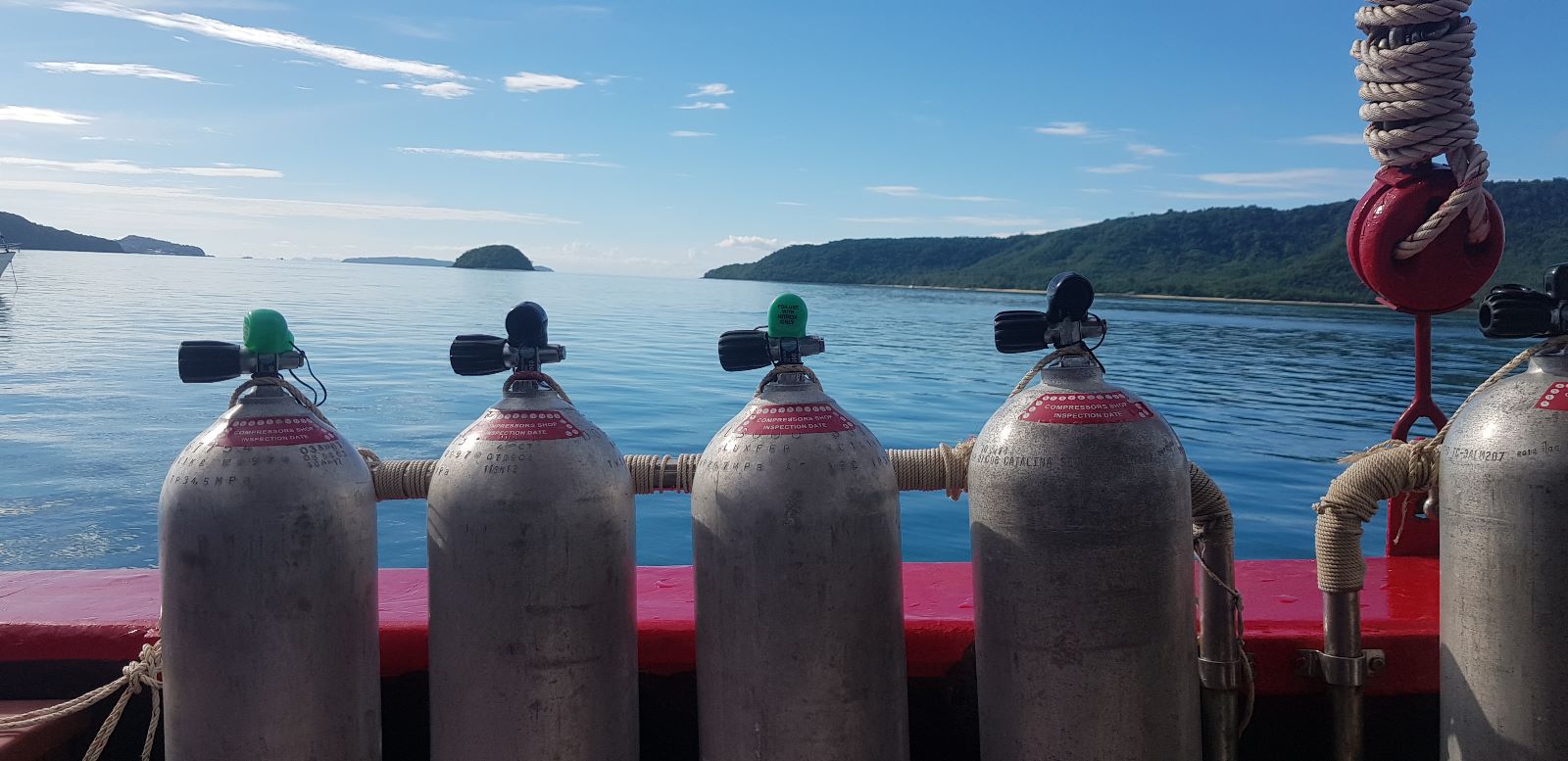There are several sizes of scuba diving tanks, but for most adults there’s the regular size and a larger size. Divers want as much time as possible underwater, or at least they don’t want the stigma of being the one who’s responsible for ending the dive. And because of this, quite a few people think that a larger tank will help them. But in many cases, this is not true.
All divers should know the science of how our bodies consume gas differently at depth and under other conditions. And that larger men will nearly always consume more than smaller ladies. So, in many cases divers who ‘don’t want to let the group down by being the heaviest on air’ opt for a larger tank, which has more capacity. This way they can stay longer under water.
While the facts would show that 25% more air should increase a diver’s time underwater, there are some other things to consider as well.
- It’s larger and will affect streamlining
- It’s heavier and will affect buoyancy & weighting
- It nearly always comes at a charge
- It can hinder your progress to improve as a diver
Your streamlining is important when you dive, because better streamlining reduces drag which reduces energy to move across the reef. If you need to use more energy to dive, you will breathe more air. Therefore, there is a trade off between ‘having more air to breathe’ and ‘breathing more air than you would normally.’
Due to the weight of a larger tank and its contents, the diver will be heavier. In addition to having to use a different number of weights to compensate for neutral buoyancy, the diver will exert more energy to carry the added weight across the reef. So, just like the streamlining, there’s another trade off between having and using more of the vital gas a diver needs to breathe.
Nearly all dive centres and boat operators will add a fee for renting out a larger tank than the standard size. This fee may not be very high ($10 per day is average), but it’s still a factor to consider if you want to have more air. Some divers feel it’s worth the extra cost, but not everyone does.
Your progress to improve your diving skills is something that changes a lot in your first 50 dives. You will reduce the amount of weight you need, you will improve your trim & buoyancy skills and, more than anything else, you will improve your air consumption. Watching your air gauge during the dive will let you know how you’re doing, and most divers will try to improve their skills in order to reduce air consumption. The skills of a diver with fewer than 100 logged dives still need perfecting, and if that diver has ‘plenty of air’ on each dive, then he or she may have less incentive to improve. It’s a little bit like how carefully you drive a car when its fuel tank is nearly empty compared to nearly full. Most conscientious dive professionals prefer to improve their divers’ skills rather than just load them up with more air in order to complete a full dive.
Who really needs a larger diving tank?
15-litre scuba diving tanks do have a purpose, and every dive centre or liveaboard boat should carry at least one or two. But no diver should consider that a larger scuba tank is the long-term norm. They can be very useful for divers who need more air, especially when others in the group consume less. But most divers who regularly use a 15-litre scuba tank should try to improve or modify other skills, with the long-term goal of using a 12-litre tank in the future.
Very large men cannot defy science. They have larger lungs with more capacity than women and smaller men. Therefore, a 15-litre tank is sometimes necessary for guys who weigh more than 100kg. (220lb.). But in most cases, everyone who dives with a larger tank early in their diving lives should aspire to improving their trim, buoyancy, weighting and ultimately their air consumption.
